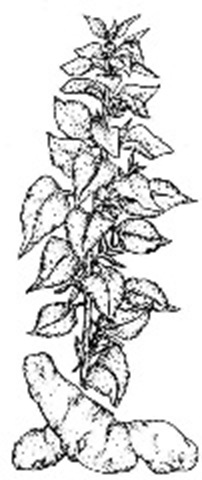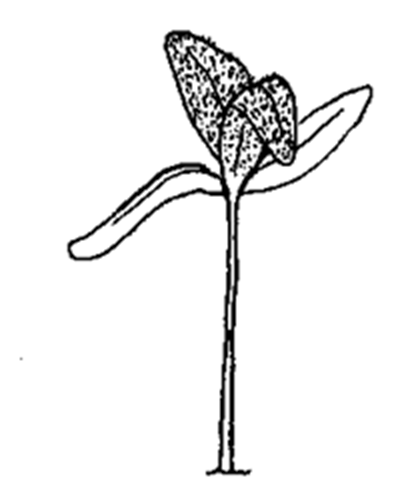See Pepper
Jerusalem artichoke
Common names: Jerusalem
artichoke, sunchoke Botanical name; Helianthus
tuberosus
Origin: North America
Varieties
Few varieties are available; grow the varieties available in your area. You may find Jerusalem artichokes growing wild by the side of the road. Commercial Jerusalem artichokes are sometimes sold in supermarkets; use these to start your own crop.
Description
Jerusalem artichokes are large,-upright, hardy perennials, with small yellow flowers two to three inches across and rough, hairy leaves four to eight inches long. This plant, which grows five to 10 feet tall, was grown by the North American Indians for its tubers, which look like small potatoes. The tubers are low in starch and taste a bit like water chestnuts.
The Jerusalem artichoke isn’t an artichoke, and it didn’t come from Jerusalem. It’s related to the sunflower, and the name is probably derived from the Italian name for a sunflower, girasole, which means turning to the sun.
where and when to grow
Jerusalem artichokes will grow anywhere, and in almost any soil as long as it’s warm and well-drained. Plant the tubers two to three weeks before the average date of last frost for your area.

Jerusalem artichoke
How to plant
Give Jerusalem artichokes the least productive soil in your garden (provided the location is sunny); they’ll probably love it, and they’ll take over areas where nothing else will grow. Plant them as a screen or windbreak. Be sure you know where you want them before you plant, however, because once Jerusalem artichokes become established little short of a tornado will shift them. It’s not necessary to fertilize the soil before planting. Plant the tubers two to six inches deep, 12 to 18 inches apart. You won’t need to cultivate because weeds are no competition for a healthy Jerusalem artichoke.
Fertilizing and watering
Don’t fertilize Jerusalem artichokes at midseason — they’ll do fine on their own.
Water only during extremely dry periods. The plants themselves can survive long dry spells, but the tubers will not develop without a regular supply of water.
Pests
Aphids occasionally visit the Jerusalem artichoke, but they don’t present any significant problem. If they do appear, pinch out infested foliage or hose the aphids off the plants. Chemically aphids can be controlled with Malathion or Diazinon. Detailed information on pest control is given in “Keeping Your Garden Healthy” in Parti.
Diseases
Tuber rot may occur if the soil is not properly drained. Maintaining the general health and

Jerusalem artichoke seedling
cleanliness of your garden lessens the incidence of disease. If a plant does become infected, remove it before it can spread disease to healthy plants. Detailed information on disease prevention is given in “Keeping Your Garden Healthy” in Part 1.
When and how to harvest
Time from planting to harvest is 120 to 150 days, and a 10-foot row should yield about 20 pounds of tubers. As the plant grows, cut off the flower stalks as soon as they appear; this will encourage tuber production. If the plant is using its energy to produce seeds, it won’t produce tubers. (The flowers, in fact, are cheerful. If you’re growing Jerusalem artichokes for decorative as well as practical purposes, you may be willing to sacrifice a few tubers so you can enjoy the flowers). Harvest the tubers when the leaves die back; dig them up with a spading fork, leaving a few in the ground for next year.
Storing and preserving
Store Jerusalem artichokes in the refrigerator for seven to 10 days, or store in a cold, moist place for two to five months. You can also freeze Jerusalem artichokes or leave them in the ground as long as possible, and dig them up as you need them. Detailed information on storing and preserving is given in Part 3.
Serving suggestions
The slightly nutty flavor of the Jerusalem artichoke goes well with mushrooms. Serve them cooked until tender then cooled and sliced, in a salad with mushrooms and a vinaigrette dressing. They can also be used raw, peeled, and thinly sliced, in a mushroom salad. Cooked, you can puree them, saute slices with tomatoes, or simply toss them with butter and seasonings as a side dish with meat or poultry. They can also be used as an extender in meat loaf.
